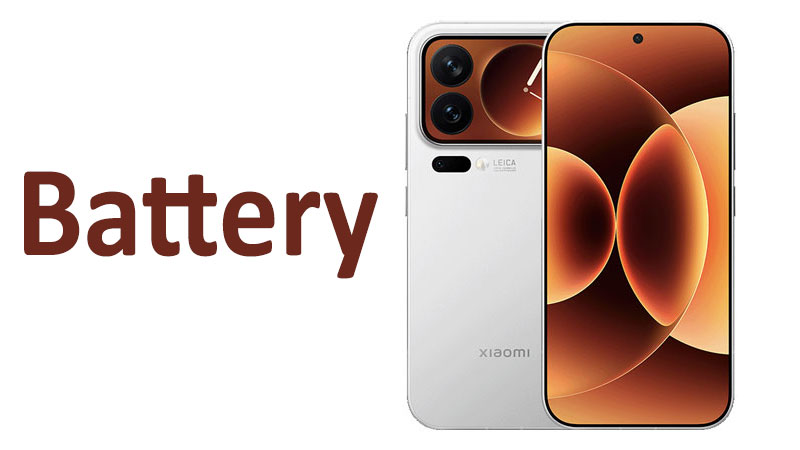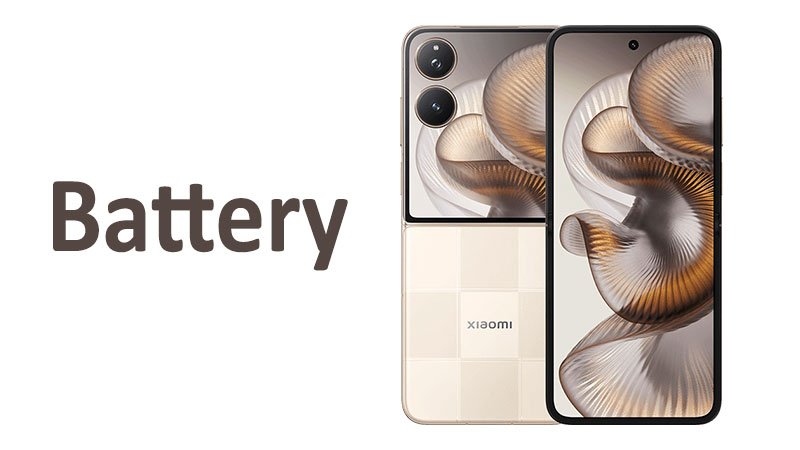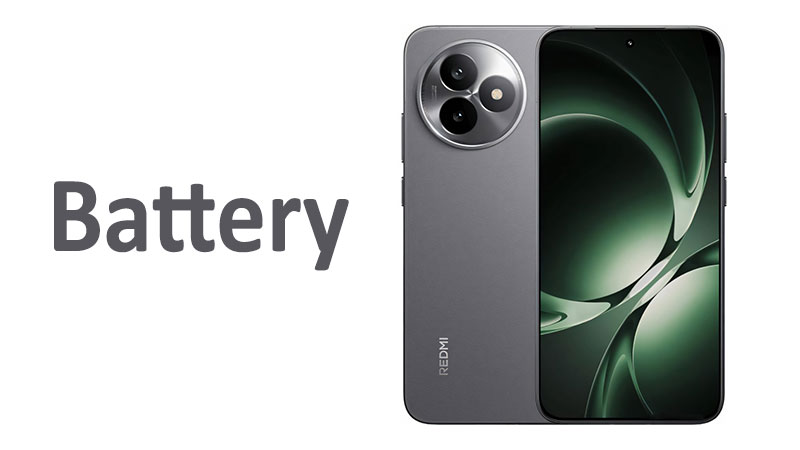The Xiaomi 17 Pro Battery system represents a major generational leap in mobile endurance. Users demand incredible longevity and rapid charging capabilities from their flagship devices. This advanced power configuration offers both immense capacity and revolutionary speed. The combination aims to eliminate battery anxiety for good. This article provides a comprehensive and detailed analysis. We explore the massive capacity, the cutting-edge chemistry, and the blazing fast charging speeds.
The Core Power Source: 6300 mAh Capacity
The Xiaomi 17 Pro boasts an impressive 6300 mAh battery capacity. This measurement, milliampere-hours, indicates the total electrical charge the battery can store. A larger mAh number generally translates directly to longer runtime. This massive cell positions the Xiaomi 17 Pro as a leader in battery size among premium smartphones. This capacity is particularly noteworthy considering the phone’s sleek flagship design. Xiaomi successfully balanced size and power density.
Next-Generation Si/C Li-Ion Technology
The enormous 6300 mAh capacity is only possible due to new materials. Xiaomi utilizes Silicon-Carbon or Si/C Lithium-Ion battery technology. This next-generation chemistry replaces some traditional graphite in the anode. Silicon can theoretically hold up to ten times more lithium ions than graphite. This difference allows manufacturers to pack far more energy into the same physical space.
The Si/C composite is an energy density game-changer. It permits this 6300 mAh cell without making the device overly thick or heavy. This high energy density is crucial for modern, powerful flagships. These phones feature power-hungry components like high-resolution displays and advanced processors. The Si/C technology ensures the phone lasts while maintaining a practical form factor.
Si/C Li-Ion: Pros and Cons
The benefits of the Si/C structure are significant. The primary advantage is increased capacity in a compact design. This leads directly to superior battery life performance. It also supports faster charging thanks to improved conductivity within the cells. Flagship devices rely on this density boost for their advanced feature sets.
However, the technology presents specific trade-offs. Silicon naturally expands during the charging cycle. Engineers mitigate this expansion using a carbon composite structure. Despite these efforts, some accelerated aging can still occur. Long-term durability is a known concern for early Si/C battery adopters. The cost of manufacturing Si/C cells is also higher than traditional lithium-ion batteries. These higher costs may contribute to the phone’s overall retail price.
Capacity Comparison: Xiaomi vs. Rivals
The 6300 mAh battery capacity sets a new standard for a flagship device. Hypothetically, the previous Xiaomi 16 Pro might have featured a 5,000 mAh or 5,400 mAh cell. The 17 Pro delivers an approximate 17 to 26 percent increase in total stored power. This uplift is transformative for daily use.
When compared to key competitors, the 6300 mAh figure shines brightly. Many major global flagships settle for capacities between 5,000 mAh and 5,500 mAh. The Xiaomi 17 Pro provides a substantial reserve. This difference means extended usage time for power users. It offers critical peace of mind during long days away from a power outlet. This large capacity becomes a significant selling point for the device.
Real-World Performance and Longevity
Battery capacity figures only tell half of the story. Actual battery life depends heavily on internal optimization. The device’s power-efficient chipset and software management are key factors. Xiaomi integrates its custom software layer to manage consumption aggressively. This optimization maximizes runtime for the demanding user.
Estimated Screen-On Time
Users can expect exceptional screen-on time from the 6300 mAh cell. Under typical moderate use, the phone should easily last two full days. This usage includes browsing, messaging, and occasional camera use. For heavy users, those who game intensely or stream video constantly, performance remains strong. Even extreme usage should guarantee a full 24 hours of operation. This is a crucial benchmark for high-end flagship phones.
Gaming performance in particular will benefit from this huge reservoir of energy. High refresh rate displays and intensive graphics processing drain power quickly. The Xiaomi 17 Pro’s battery handles these loads effectively. Video playback tests often show runtimes exceeding 20 hours. This confirms its status as an endurance champion.
Managing Battery Health and Cycle Life
Maintaining long-term battery health is vital for consumers. The Si/C chemistry, while offering density, requires careful management. Xiaomi addresses this through advanced software algorithms and dedicated chips. The phone’s charging system monitors cell temperature meticulously. High heat is the primary enemy of battery lifespan.
The internal Battery Management System, or BMS, actively mitigates thermal stress. It adjusts the 100W charging speed based on current temperature. This prevents the cell from overheating during rapid charging sessions. These intelligent controls help preserve the battery’s overall cycle count. They slow the inevitable degradation that occurs over years of use.
Adaptive Charging Features
The phone features sophisticated adaptive charging capabilities. These systems learn the user’s daily habits and schedule. For example, if you charge overnight, the phone charges quickly up to 80 percent. It then maintains this level until just before you typically wake up. Finally, it quickly tops off to 100 percent. This minimizes the time spent holding a full charge, which reduces stress on the cell. This careful management extends the useful lifespan of the Si/C battery.
Impact of Si/C on Lifespan
Despite these software safeguards, buyers should understand the Si/C trade-off. Over many cycles, the silicon anode expands slightly more than graphite. This means that a 6300 mAh Si/C battery might degrade faster than a standard 6300 mAh graphite cell. A typical battery remains robust for 800 charge cycles. Users might notice capacity reduction slightly sooner with the Si/C technology. However, the massive starting capacity means degradation still leaves a useful amount of charge. Even after significant capacity loss, the remaining power may still exceed many competitors’ brand-new batteries.
Wired Charging: The 100W HyperCharge System
The Xiaomi 17 Pro does not just offer capacity; it offers speed. The device supports phenomenal 100W wired fast charging. This technology drastically changes the charging paradigm for mobile users. A quick five-minute plug-in can supply hours of additional usage time. This is a game-changing feature in high-stress situations.
Speed Analysis: 100W Wired
One hundred watts of power is exceptionally fast for a smartphone. This speed means the 6300 mAh battery can reach full charge very quickly. Based on industry standards, the Xiaomi 17 Pro should achieve 100 percent charge in approximately 25 to 30 minutes. Reaching 50 percent capacity might take a mere 10 to 12 minutes. This level of speed provides unparalleled convenience.
The charging rate is not constant throughout the cycle. The phone utilizes a stepped charging approach. It applies the full 100W power during the initial stages when the battery is mostly empty. The speed then tapers off as the battery nears 100 percent. This tapering action protects the cell from damage and overheating. This strategy ensures both maximum speed and long-term safety.
Understanding Charging Protocols
The Xiaomi 17 Pro supports multiple industry charging standards. It is compatible with PD3.0, QC3+, and 100W PPS. PPS, or Programmable Power Supply, is particularly important here. PPS is a sub-specification of the USB Power Delivery (PD) protocol. It allows for fine-tuned, step-by-step voltage and current adjustments.
This dynamic adjustment maximizes efficiency and minimizes heat generation. It ensures the phone can draw optimal power from compatible chargers. QC3+ (Quick Charge 3+) support ensures backward compatibility with numerous older chargers. This flexibility means users can rapidly charge the device with various power bricks. However, only the proprietary 100W charger will achieve the maximum potential speed.
Thermal Management and Safety
High-wattage charging inevitably generates substantial heat. Xiaomi integrates crucial safety measures to manage this. The phone incorporates a sophisticated cooling system. This system likely uses a large vapor chamber or advanced graphite sheets. These components efficiently dissipate heat away from the battery cells.
Safety is further guaranteed by the dual-cell battery design. High-capacity Si/C batteries are often split into two smaller cells. Charging these two cells in parallel halves the voltage and current needed for each. This reduces heat generation dramatically compared to a single large cell. This engineering choice is paramount for maintaining safety at 100W.
The 100W Advantage over Rivals
The 100W wired charging speed offers a clear advantage in the flagship market. Some competitors max out at 45W or 65W wired charging speeds. The Xiaomi 17 Pro cuts charging time by half compared to a 45W device. This difference is especially noticeable when time is scarce. If a user needs a quick boost before leaving home, 100W delivers.
Furthermore, many global flagships omit the charger from the box entirely. Xiaomi often includes the necessary high-wattage charger in the retail package. This inclusion is a significant value proposition for the buyer. It allows immediate access to the maximum charging speed without extra cost.
Wireless and Reverse Charging Capabilities
Convenience is a hallmark of modern flagship phones. The Xiaomi 17 Pro offers extensive wireless charging support. It features a rapid 50W wireless charging capability. Additionally, it provides 22.5W reverse wireless charging. This creates a versatile, cable-free power ecosystem.
50W Wireless Charging: Speed Meets Convenience
Fifty watts of wireless power is extremely fast. This rate rivals the wired charging speeds of many mid-range phones. Placing the device on a compatible 50W wireless pad offers tremendous convenience. Users gain significant battery life without ever plugging in a cable. This is ideal for office desks or bedside charging setups.
Wireless Efficiency and Heat
Wireless charging involves electromagnetic induction. This process is inherently less efficient than wired charging. Some energy converts into wasted heat during the transfer. The Xiaomi 17 Pro’s 50W system minimizes this loss through advanced coil alignment. Still, the phone may become noticeably warmer than during 100W wired charging.
The internal cooling system must work overtime during these sessions. The software will throttle the 50W speed if the temperature rises too high. This thermal management ensures the safety and longevity of the battery. Users should place the charging pad in a cool, well-ventilated area.
Comparison to Standard Wireless Rates
Standard Qi wireless charging typically maxes out at 15W. The Xiaomi 17 Pro’s 50W speed is more than three times faster. Charging to 100 percent wirelessly may take around 45 to 55 minutes. This is roughly the same time required for a 65W wired charge on other devices. The massive speed increase justifies the higher cost of a 50W wireless pad. The convenience factor is arguably the biggest benefit of the 50W technology.
Power Sharing: 22.5W Reverse Wireless Charging
The Xiaomi 17 Pro doubles as a high-speed portable power bank. It features 22.5W reverse wireless charging support. This feature allows the phone to charge other compatible devices wirelessly. This power output is surprisingly generous for a reverse function. Most competitors offer reverse charging at much slower rates, usually 5W or 10W.
Functionality and Use
This feature is highly practical for small gadgets. Users can easily top up their wireless earbuds or a smartwatch. The 22.5W rate even allows the phone to charge another smartphone in a pinch. This rapid power-sharing capability provides emergency power to friends or accessories. Users simply place the smaller device on the back of the Xiaomi 17 Pro. The charging starts instantly, assuming both devices are properly aligned.
Practical Applications of Reverse Charging
The power output is strong enough to be genuinely useful. A 22.5W rate can quickly revive a dead pair of wireless earbuds. It might take just 15 minutes to charge them fully. This capability eliminates the need to carry multiple charging accessories. It transforms the Xiaomi 17 Pro into a central power hub. It is a subtle but valuable feature for technology enthusiasts and travelers.
Key Considerations for Xiaomi 17 Pro Buyers
Prospective buyers must consider several factors beyond the raw numbers. The power system influences the entire user experience. These elements involve peripheral costs and internal phone design. Understanding these points leads to a more informed purchase decision.
Cost of High-Speed Chargers
Achieving the maximum 50W wireless speed requires a specialized charger. Standard 15W pads will not suffice for the fastest wireless charging. Buyers should budget for a compatible, high-wattage wireless stand or pad. These specialized accessories often come at a premium price. If the 100W wired charger is not included, that cost must also be factored in. Investing in the correct accessories unlocks the phone’s full charging potential.
Software Optimization and Battery Management
Software is responsible for integrating the battery technology. Xiaomi’s commitment to the Surge G1 battery chipset is crucial. This dedicated chip manages the complex charging algorithms and temperature control. Users should ensure software updates remain consistent. Ongoing optimization ensures the phone continues to balance performance and battery health effectively. Poor software management can easily negate the benefits of the 6300 mAh capacity.
Physical Size and Weight Implications
Fitting a 6300 mAh Si/C battery requires significant internal space. Even with the density advantages, the Xiaomi 17 Pro may be slightly thicker than rivals. The device will likely feel substantial in the hand. Weight is a factor for users preferring lighter, more compact devices. Buyers must weigh the benefit of two-day battery life against the larger physical profile. This balance is a personal choice for every user.
Pros and Cons Summary
Evaluating the battery system requires a balanced view of its strengths and weaknesses. The Xiaomi 17 Pro makes several compelling statements with its battery specifications. However, certain limitations remain part of the technology.
Advantages
The huge 6300 mAh capacity delivers outstanding longevity. This provides some of the best battery life available in a flagship phone. The 100W wired charging speed is industry-leading and profoundly convenient. It offers extremely rapid replenishment in critical moments. Fifty-watt wireless charging provides unmatched cable-free speed. Furthermore, the 22.5W reverse wireless charging is fast and highly practical. The use of Si/C technology keeps the device relatively slim despite the giant cell.
Disadvantages
The Si/C battery chemistry may lead to accelerated degradation over time. Users might see capacity losses slightly sooner than with pure graphite cells. The proprietary 100W speed requires the specific Xiaomi charger. Using third-party chargers will limit the maximum achievable charging rate. High-wattage charging, even with safeguards, generates heat. Excessive heat remains a potential risk factor for long-term component health. Finally, the massive battery cell contributes to a heavier and bulkier device overall.
Conclusion
The Xiaomi 17 Pro Battery system is undeniably one of its greatest strengths. The combination of a 6300 mAh Si/C Li-Ion battery and 100W charging is formidable. It provides unparalleled endurance and speed. It offers a genuine two-day usage capability for most users. Furthermore, it allows for a complete recharge in under half an hour. The advanced Si/C chemistry maximizes capacity within a relatively svelte chassis.
Buyers seeking freedom from charging anxiety should prioritize this phone. The comprehensive charging suite, including 50W wireless and 22.5W reverse charging, enhances versatility. While Si/C longevity concerns exist, the sheer starting capacity cushions any early degradation. The Xiaomi 17 Pro sets a new benchmark for flagship power management. It delivers an essential upgrade for power-hungry modern users.
Frequently Asked Questions (FAQ)
1. What is the maximum charging speed of the Xiaomi 17 Pro?
The maximum wired charging speed is 100W. The device also supports 50W maximum wireless charging.
2. Does the Xiaomi 17 Pro come with a charger in the box?
Xiaomi typically includes the proprietary 100W fast charger with its flagship phones. This allows users to reach maximum speeds immediately.
3. What does Si/C Li-Ion mean for the battery?
Si/C stands for Silicon-Carbon Lithium-Ion. This technology increases the battery’s energy density. It allows a larger 6300 mAh capacity in a smaller physical size.
4. How long does it take to fully charge the 6300 mAh battery?
Using the 100W wired charger, the Xiaomi 17 Pro can charge from empty to 100 percent in about 25 to 30 minutes.
5. Can I use the Xiaomi 17 Pro to charge other phones?
Yes, the phone features 22.5W reverse wireless charging. This allows it to wirelessly power small accessories or other compatible phones.



